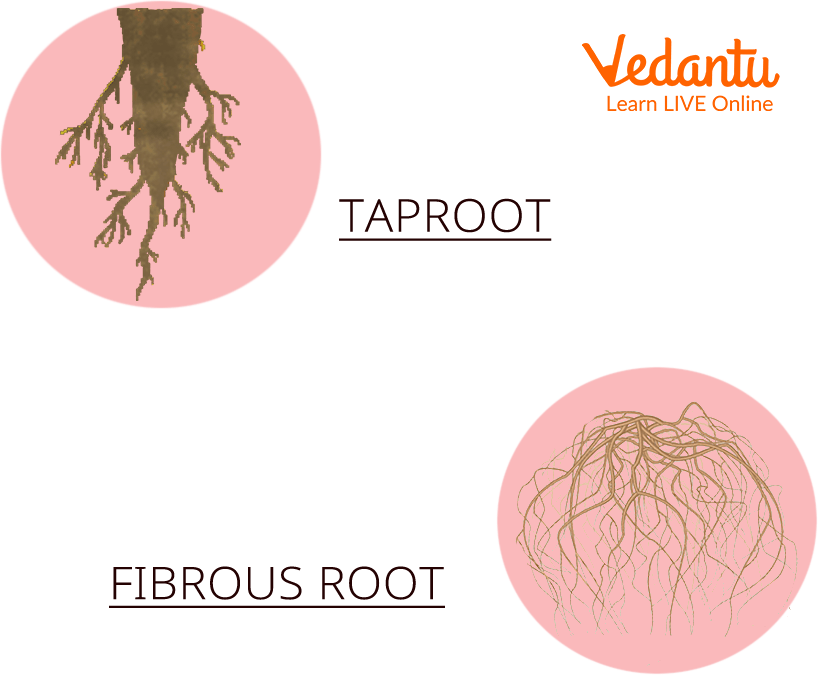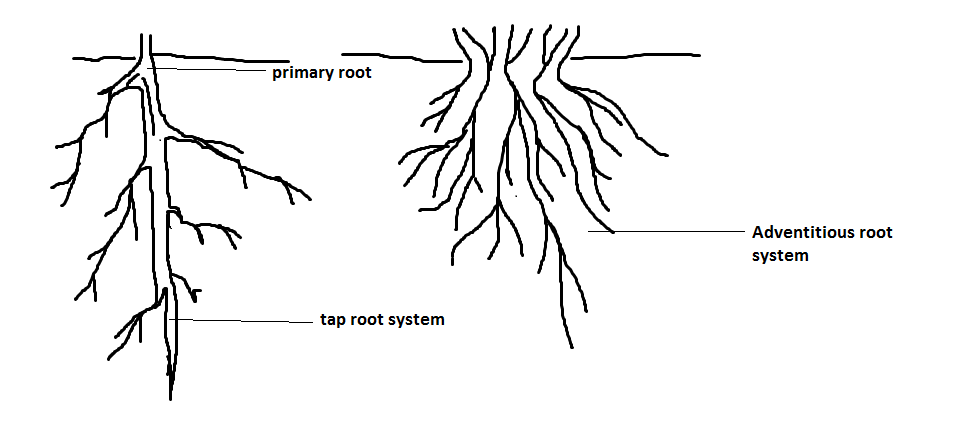Major Roles and Adaptations of Plant Roots in Growth
Plants are an essential part of our ecosystem, evolving over billions of years to become the green lungs of our planet. The root system in plants is a crucial component that not only supports the plant but also plays a significant role in water and nutrient absorption. In this guide, we will explore what a root is, the various types of roots in plants, and their vital functions. Whether you’re a student, educator, or simply curious about nature, this detailed yet easy-to-understand article is for you.
Also Check: Plant Growth and Development
What is Root?
A root is the underground part of a plant that anchors it to the soil and absorbs water and dissolved minerals. Every root system in plants is designed to support the overall health of the plant by:
Anchoring: Keeping the plant stable in the soil.
Absorbing: Taking up water and essential nutrients.
Storing: Acting as a reservoir for food in the form of starch.
Reproducing: In some cases, contributing to vegetative propagation.
Types of Roots in Plants

1. Taproot System
The taproot system is characterised by a single, large primary root that grows vertically downward. Smaller lateral roots branch off from the taproot. This type is common in many dicotyledonous plants such as:
Carrot
Beetroot
Parsley
These are excellent examples when discussing types of roots with examples because they demonstrate the deep-penetrating nature of taproots, which is ideal for accessing water from deeper soil layers.
2. Fibrous Root System
In contrast, the fibrous root system consists of numerous, thin roots spreading out in a network rather than one central taproot. This system is typical of monocotyledonous plants, for example:
Rice
Wheat
Maize
This explanation of types of roots in plants helps illustrate why plants with a fibrous system tend to have a more bushy and expansive root structure that efficiently collects moisture from the surface layers of soil.
3. Adventitious Roots
Another category is the adventitious roots, which develop from non-root tissues such as stems or leaves. These roots are especially important for:
Support (as seen in the aerial roots of the banyan tree)
Extra absorption in specialised conditions
Special functions like respiration and storage
Adventitious roots highlight the diversity in different types of roots and showcase how versatile the concept of what is root can be in adapting to various environmental challenges.
Also Read: Anatomy of Monocot and Dicot Plants

Functions of the Root System in Plants
The root system in plants performs several critical roles:
Anchorage: Prevents soil erosion by keeping the plant firmly attached.
Absorption: Uptakes water and minerals essential for photosynthesis.
Storage: Stores nutrients and food, which is vital during unfavourable conditions.
Reproduction: In certain plants, roots can generate new individuals, an example of vegetative propagation.
Ecological Impact: Maintains soil health and supports a wide range of microorganisms, contributing to a balanced ecosystem.
Also Check: Morphology of Flowering Plants

Unique Insights and Additional Information
Beyond the standard information, here are some unique aspects that set our guide apart:
Symbiotic Relationships: Many roots form symbiotic associations with fungi (mycorrhizae) and bacteria, enhancing nutrient uptake—a detail often not emphasised enough.
Adaptations to Environment: Some plants have evolved specialised roots, such as aerial roots that not only absorb nutrients from the air but also assist in climbing and support.
Innovative Root Structures: In some aquatic and semi-aquatic plants, roots can filter and trap sediments, contributing to water purification processes.
Also Check: Mycorrhiza
Interactive Quiz
Question 1:What is the primary function of roots in plants?
A. Carrying out photosynthesis
B. Absorbing water and minerals from the soil
C. Producing flowers and fruits
D. Releasing oxygen into the atmosphere
Correct Answer: B. Absorbing water and minerals from the soil
Explanation: Roots are primarily responsible for anchoring the plant and absorbing essential water and dissolved minerals, which are crucial for plant growth and photosynthesis.
Question 2: Which term best describes the main central root from which smaller lateral roots branch off?
A. Adventitious root
B. Fibrous root
C. Taproot
D. Aerial root
Correct Answer: C. Taproot
Explanation: The taproot is the dominant central root that grows downward and from which lateral roots emerge, as seen in plants like carrots and beetroot.
Question 3: Which type of root system is most common in monocotyledonous plants such as rice and wheat?
A. Taproot
B. Fibrous root
C. Adventitious root
D. Storage root
Correct Answer: B. Fibrous root
Explanation: Monocot plants typically have a fibrous root system, characterised by many thin roots forming a dense network, which efficiently collects water from the soil’s surface.
Question 4: What distinguishes adventitious roots from taproots?
A. They grow exclusively above the ground.
B. They develop from non-root tissues such as stems or leaves.
C. They are always thicker and more robust.
D. They only serve as storage organs.
Correct Answer: B. They develop from non-root tissues such as stems or leaves.
Explanation: Unlike taproots, which originate from the radicle, adventitious roots arise from other parts of the plant, providing additional support and sometimes serving specialised functions like respiration or extra nutrient absorption.
Question 5: How many main types of roots are there as discussed in our guide on the root system in plants?
A. One
B. Two
C. Three
D. Four
Correct Answer: C. Three
Explanation: Our guide explains that there are three main types of roots: taproots, fibrous roots, and adventitious roots. Each type has its unique structure and function, contributing to the overall health and stability of the plant.
Read More:


FAQs on Plant Roots: Types, Structure, and Functions
1. What are the main types of root systems found in plants?
Plants primarily have three main types of root systems, each with a distinct structure. These are:
- Taproot System: Characterised by a single, thick, main root called the taproot, which grows deep into the soil. Smaller, lateral roots branch off from it.
- Fibrous Root System: Consists of a dense cluster of many thin, moderately branching roots that grow from the stem. These roots do not penetrate as deeply as a taproot system.
- Adventitious Root System: These are roots that arise from any part of the plant other than the radicle (the embryonic root). They can grow from stems or leaves, like the prop roots of a banyan tree.
2. What are the most important functions of a plant's root system?
The root system is vital for a plant's survival and performs several key functions. The five primary functions are:
- Anchorage: Roots firmly hold the plant in the soil, providing stability against wind and rain.
- Absorption: They absorb essential water and dissolved minerals from the soil, which are then transported to the rest of the plant.
- Storage: Many plants modify their roots to store food and nutrients, such as starch. Carrots and beetroots are common examples.
- Conduction: Roots transport the absorbed water and minerals upwards to the stem and leaves.
- Synthesis: Roots are capable of synthesising certain plant growth regulators.
3. Can you provide some common examples of plants with taproots and fibrous roots?
Yes, different types of plants exhibit different root systems. Here are some everyday examples:
- Plants with Taproots: These are typically found in dicotyledonous plants. Common examples include carrot, radish, beetroot, mango, mustard, and parsley.
- Plants with Fibrous Roots: This system is characteristic of monocotyledonous plants. Examples include wheat, rice, maize, grass, and onion.
4. What is the fundamental difference between the root systems of dicot and monocot plants?
The primary difference lies in the origin and structure of their root systems. In dicot plants, the embryonic root (radicle) grows directly into a persistent, dominant taproot. In contrast, in monocot plants, the primary root is short-lived and is replaced by a large number of roots that originate from the base of the stem, forming a fibrous root system.
5. Why do some plants like carrots and radishes develop thick, fleshy roots?
The thick, fleshy nature of roots in plants like carrots, radishes, and turnips is a special adaptation for food storage. These are examples of modified taproots. The plant stores excess food, typically in the form of starch, in these roots. This stored energy helps the plant to survive unfavourable conditions or to fuel flowering and seed production in the next growing season.
6. What are the different parts or regions of a typical root tip?
A typical root tip is divided into four main regions, each with a specific function:
- Root Cap: A thimble-like structure that covers and protects the tender apex of the root as it pushes through the soil.
- Region of Meristematic Activity: Located just behind the root cap, this region contains actively dividing cells that are responsible for root growth.
- Region of Elongation: The cells in this zone rapidly elongate, which is the primary cause for the growth in the length of the root.
- Region of Maturation: This is where the elongated cells differentiate and mature. This region is distinguished by the presence of very fine, delicate root hairs, which are the primary sites of water and mineral absorption.
7. How does the type of root system help a plant survive in its specific environment?
The root system is a crucial adaptation to a plant's environment. A deep taproot system is advantageous for plants in dry or windy areas, as it provides strong anchorage and can reach water sources located deep within the soil. A shallow, widespread fibrous root system is highly efficient at absorbing surface water from rainfall and helps bind the topsoil, which is excellent for preventing soil erosion, a common trait in grasses.
8. Are all plant parts that grow underground considered roots? For example, is a potato a root?
No, not all underground plant parts are roots. This is a common misconception. A potato, for instance, is not a root; it is a modified underground stem called a tuber. The key difference is that stems (even underground ones) have structures like nodes and buds (the 'eyes' of a potato), from which new shoots can grow. True roots, like carrots or radishes, do not have nodes or buds.










